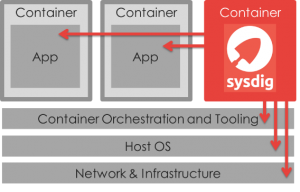IT administration is a thankless job. Let’s face it—the only time admins gain any recognition is when something goes wrong. In fact, the most successful IT administrators proactively manage very stable environments where very few failures and performance degradations occur. Unfortunately, though, this is rarely the case, and it is far more common for admins to get stuck in the break/fix cycle of reactive “firefighting” where problems are never truly resolved and are destined to occur again. Making matters worse, increasing requirements for mobility, business agility, high performance, and high availability have substantially increased IT administrator workloads. With this kind of pressure, it’s no wonder IT professionals are frustrated.
In truth, the hectic pace of IT management is rarely the fault of the administrators themselves. Poor processes and a lack of appropriate management resources is usually the cause. Listed below (in no particular order) are the top five reasons IT administrators are unnecessarily expending valuable time and effort:
- Lack of Endpoint Visibility – Without an understanding of the devices being supported, administrators are in the dark about how to manage and support user environments. Yet, amazingly, many organizations still rely on Excel spreadsheets to manage device inventory. It cannot even really be considered performing asset management as manual methods for recording as endpoint configuration information will never be complete or kept up to date. Automated asset management is essential for recording user device details—including device type, operating system, device configurations, installed applications, and health status information—in a centralized database for easy reporting and alerting.
- Insufficient Automation – Any repeatable task can be automated, and the majority of administrative tasks are repeatable. For example, EMA primary research indicates that automation reduces the time spent deploying patches and applications by 50%, on average, and it reduces time spent managing malware systems by 83%. Administrators should not be wasting time performing repeatable mundane tasks, but instead should direct their attention to improving business productivity and introducing new business-focused services. Policy-based automation, in particular, will ease the management process by enabling pre-determined configuration and access privileges to be leveraged by automated tasks. Also, automated management solutions enable continuous regulatory and service compliance enforcement with minimal administrator effort.
- Reliance on Point Solutions – Organizations will sometimes adopt a management solution that only performs a single task, such as patching or application deployment, in order to resolve a specific problem. As new issues arise, more of these point solutions are adopted from a variety of disparate vendors. Eventually, this leads to point-product sprawl, a situation in which administrators must learn and use many different interfaces to perform essential support tasks. While a modular approach to management platform adoption may be advantageous to organizations with limited budgets, all management solutions should be integrated so that they can be accessed from a common console and can use both a common asset database and a common reporting and alerting engine.
- Independent Support for Enterprise Mobility – According to EMA primary research, 87% of business professionals regularly employ both a PC and at least one mobile device (i.e., a smartphone or tablet) to perform job tasks. This means the number of user devices that administrators must support has dramatically increased. Unfortunately, most enterprise mobility management (EMM) platforms have evolved independently of PC management platforms, resulting in separate support solutions that require different management processes and skill sets to operate. Instead, organization should adopt unified endpoint management (UEM) solutions that integrate both PC and mobile management into a single interface.
- Inability to Perform Root-Cause Analysis – Identifying the root cause of failure events is the principal method for enabling proactive IT management. Automated monitoring combined with analytical reporting should be employed to rapidly identify problems and potential problems so they can be resolved before impacting business productivity. This ends the break/fix cycle of reactive firefighting and allows administrators to refocus efforts on improving business performance.
Central to resolving all of these productivity issues is the adoption of an integrated endpoint management platform that combines PC and mobile configuration, security, monitoring, and reporting and is accessible from a single unified console. Armed with a consolidated management solution, administrators can transform IT support stacks into failure-resistant environments and gain recognition for the number of incidents prevented rather than the number of incidents that have occurred. While receiving notes of appreciation is rare for IT administrators, increased user satisfaction and infrequent complaints may be thanks enough and will certainly warrant gratitude from IT management focused on meeting SLA commitments.






